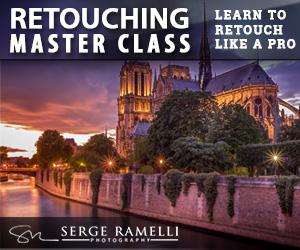Digital Camera Buying Guide: Shopping for a Point-and Shoot Digital Camera
 The most popular cameras today are point-and-shoot models. They are relatively inexpensive, fit easily into a pocket or purse, and have lots of auto controls to help make taking great pictures easy. However, you will not have the extensive manual control and the big sensor that makes digital SLRs so awesome. You can get a very good point-and-shoot camera with lots of features which may fit your needs perfectly without paying the big bucks for a D-SLR. There are so many models on the market and more new ones coming out almost daily. So how do you find the right camera to meet your needs and price point? Here is what to look for and some questions to ask when looking for a new digital
point-and-shoot camera:
The most popular cameras today are point-and-shoot models. They are relatively inexpensive, fit easily into a pocket or purse, and have lots of auto controls to help make taking great pictures easy. However, you will not have the extensive manual control and the big sensor that makes digital SLRs so awesome. You can get a very good point-and-shoot camera with lots of features which may fit your needs perfectly without paying the big bucks for a D-SLR. There are so many models on the market and more new ones coming out almost daily. So how do you find the right camera to meet your needs and price point? Here is what to look for and some questions to ask when looking for a new digital
point-and-shoot camera:
Popular Reviews
Top Rated HD Camcorders
Top Rated Photo Printers
Adobe Photoshop Elements
Adobe Lightroom
ACDSee Photo Manager
Corel Paint Shop Pro
Photo Scanning Services
Photo Book Review
Snapfish Photo Service
Shutterfly Photo Service
Megapixels vs Sensor Size
Most of the new digital cameras are in the 8 to 10 megapixel range. An 8 MP camera will print photos up to 11x17 inches. If you do a lot of photo cropping, a higher megapixel camera will give you more flexibility, and you'll still be able to make reasonably large prints at good resolution. But if you mainly print 4x6 images don't be obsessed with the megapixels. Megapixels alone do not determine photo quality. The sensor size is very important; the bigger the better. Point-and-shoot cameras typically have a sensor size starting at about 25mm² for less expensive models and high end D-SLRs can go up to 1,977mm². One of my favorite cameras that has a surprisingly large sensor for a point-and-shoot is the Canon PowerShot S95IS .
Shutter Speed
This means how long from the time you press the shutter to when the photo is actually taken. A long delay could mean your subject has moved out of position by the time the picture is taken. A faster shutter speed such as 1/500 of a second will enable you to capture moving objects with less blur.
Check the Features
Image Stabilization
Look for optical or sensor-shift stabilization in addition to the commonly-found digital image stabilization.
Optical Zoom
Optical zoom is important. The more zoom, the closer you can get to your subject. Most point-and-shoots have a 3x to 5x zoom with 4x being very common. Some models offer up to 10x zoom and if you want to move up to a superzoom, which will be a bit larger camera, you can get up to 18x.
Shooting Modes
Most cameras will offer a variety of auto modes such as portrait, landscape, beach, night, candlelight, macro, kids, sports, etc. Better cameras will also give you some manual control for things like aperature, shutter speed and white balance.
LCD Screen
In addition to the overall size of the camera, pay attention to the size of the LCD screen. Most cameras in the point-and-shoot range will have LCDs of between 2.5 to 3 inches. Generally the bigger the better, but also look at the screen resolution, which is measured in dots -- look for a camera with at least 230,000 dots. Be careful about the new touch-screen cameras because while they seem cool, they take up a lot of power and you will be constantly recharging the battery.
HD Video
Most point-and-shoot cameras offer standard definition video (640 by 480 fps) but cameras with HD video are becoming increasingly common and the price is coming down. All HD video recording is not the same, however. On the low end you will get 1,280 by 720 pixels at 30 progressive frames per second. This is fine for uploading to Facebook or YouTube and you can find a camera with HD under $200. Higher end point-and-shoots will offer full 1080p HD but it will cost more, likely around $400.
What About the Size
The smaller and slimmer the camera, the pricier it tends to be and some features may be missing. The display and zoom may be smaller as well. Also keep in mind that for men in particular, super tiny cameras may be a bit awkward to hold and manage the controls. Your best bet, especially if this will be your primary camera, may be one that is still pocket-size yet not ultra slim.
How much power do you get from the battery and is it rechargeable?
There is nothing worse than taking photos at a party or on vacation and having your camera run out of juice. You may want to carry a spare battery with you if it is inconvenient to take your battery charger on outings. As mentioned, the new touch-screen cameras tend to take a lot of power.
Top Rated Digital Cameras
We've done a lot of the work for you and sifted through the current batch of point-and-shoots to find the top rated models. Click here for a list and brief reviews of top rated digital point-and-shoot cameras.

 Hi. I'm
Hi. I'm 
